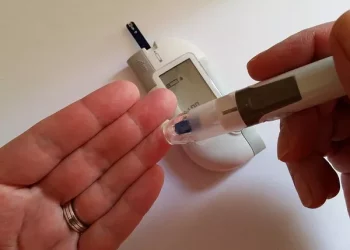In the United States, over 300,000 children and teenagers live with Type 1 diabetes, a chronic condition where the pancreas fails to produce insulin, a hormone crucial for regulating blood sugar and energy. For many families, the diagnosis of Type 1 diabetes can come as a shock, often accompanied by fear, uncertainty, and the overwhelming need to learn medical details quickly.
Kristina M. Babcock Donahue, M.S.W., L.I.C.S.W., a clinical social worker specializing in pediatric endocrinology at Mayo Clinic, explains, “Families often feel the pressure to become medical experts almost overnight, particularly during hospitalization. The experience can feel similar to bringing your firstborn home from the hospital — it’s a new and unfamiliar journey.”
Parents and caregivers may find themselves anxious and unsure as they adjust to managing the condition. Babcock offers advice: “Don’t try to take it day by day. Focus on one meal, one snack at a time.”
The Family Im pact of Type 1 Diabetes
The first year after a diagnosis of Type 1 diabetes is often the hardest. Families encounter “firsts” like the first insulin injection, the first meal away from home, and the first vacation with diabetes care routines in place. However, as Babcock notes, “The more you tackle these firsts, the more confident you will become in managing everyday activities despite the condition.”
While the adjustments to daily life — such as blood glucose monitoring, insulin injections, and dietary changes — can be challenging, advances in diabetes technology have made these tasks more manageable. Families can also seek support from healthcare teams, school nurses, and support organizations such as the American Diabetes Association.
The emotional impact extends beyond the child with diabetes. Siblings may feel neglected as the focus shifts to the child’s condition. Janet L. Hansen, R.N., CDE, a diabetes care specialist at Mayo Clinic, emphasizes the importance of balancing attention. “Siblings may feel as though their brother or sister with Type 1 diabetes is receiving special treatment, while the diagnosed child may feel left out when they see siblings enjoying activities like sleepovers without extra medical attention.”
To maintain harmony, it’s crucial to make time for each child individually. Regular family check-ins and one-on-one sessions with parents can help everyone process the changes. For added support, families may want to consult with a mental health professional to guide them through these adjustments.
How to Discuss Type 1 Diabetes with Your Child
Talking about Type 1 diabetes with your child requires a tailored approach. Here are some strategies to help:
Avoid Blame: Make it clear that the diagnosis is not anyone’s fault. Type 1 diabetes cannot be prevented, and it’s not caused by anything the child or parent did.
Educate About the Condition: Children, regardless of age, need a basic understanding of Type 1 diabetes. Discussing how the disease works and distinguishing it from Type 2 diabetes can empower them. Tools like educational videos or discussions with healthcare professionals can help.
Use Accurate Terminology: While young children may not grasp technical terms like “insulin” and “pancreas,” it’s important to introduce them to these words. Analogies, such as explaining insulin as “a key that opens the door to cells,” can make the concepts more understandable.
Stay Neutral About Food and Test Results: Refrain from labeling foods or blood sugar levels as “good” or “bad.” Instead, use descriptive terms such as “high,” “low,” or “in range” for blood sugar. This helps prevent feelings of shame or confusion around food and health.
Repetition is Key: It takes time to fully understand a new diagnosis, so don’t hesitate to repeat explanations. The whole family will benefit from hearing information multiple times to better absorb and manage the situation.
Through consistent communication, support, and understanding, families can navigate the complexities of Type 1 diabetes and adjust to this new chapter in their lives.
Related topics:
New Discovery Offers Hope for Diabetics: S100A9 Protein May Replace Insulin Therapy
Ultrasound Localization Microscopy as a Tool for Monitoring Type 2 Diabetes Progression
New Study Reveals Diabetes Rates in Australia May Be Significantly Underestimated






















